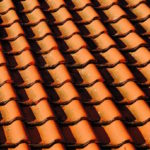Dancing in the dark does you good

The age-old advice to ‘dance like nobody’s watching’ appears to be benefiting the health and wellbeing of women across Australia according to a new study from the University of Sydney.
Researchers from the Faculty of Medicine and Health recently partnered with No Lights, No Lycra to explore who regularly attends their nationwide free-form dance events held in the dark, including their motivations and self-reported health benefits.
Researchers found the overwhelming majority of participants in No Lights, No Lycra were women in their mid to late 30s, who didn’t meet physical activity guidelines.
“The latest national statistics tell us that more than one in two Australians do not get enough physical activity for health, and women are less active than men,” said lead author, PhD candidate Bridget Foley.
“It’s important to look at innovative ways to get more people more active, and understand what it is about unconventional sport and recreational activities which get people, especially women, to change their inactive lifestyles.
“No Lights, No Lycra shows how dance can be modified in a real-world setting to engage women who aren’t regular gym-goers and don’t participate in sport regularly.”
The peer-reviewed study, publishedin BMC Sports Science, Medicine and Rehabilitation, surveyed 1190 participants across 52 No Lights, No Lycra locations over a one week period in 2018.
Researchers found the top reasons for attending were to “have fun,” “improve physical health and fitness” and “improve mental health and wellbeing.”
When asked about the benefits of attending, 95 percent of participants agreed it improved their physical health and 97 percent agreed it improved their mental health.
Ms Foley said this is significant considering half of those surveyed reported being diagnosed with depression, anxiety or other mental health conditions.
“Women’s education, work, home life and caring responsibilities have a huge impact on their participation in physical activity in middle age,” said Ms Foley.
“The latest research in this area tells us that programs which are safe, flexible and enjoyable – like No Lights, No Lycra – are the most likely to attract these women and encourage physical activity.”
“Dance is particularly interesting as while we know participation is high in young girls, they often stop participating in dance and other physical activity as they get older due to cost, time commitment, focus on technique, mirrors, tight-fitting clothes and lack of enjoyment.”
Summary of findings
88 percent of participants did not achieve recommended 30 minutes of moderate-to-vigorous physical activity five days a week and No Lights, No Lycra made up 23 percent of the participants’ overall physical activity.
50 percent of the participants reported a medically diagnosed mental health condition and 20 percent reported a chronic physical health condition. 95 percent said that participation improved their physical health and 97 percent said their participation improved their mental health
Senior author Dr Lindsey Reece of the Prevention Research Collaboration in the School of Public Health and Charles Perkins Centre said more needs to done to encourage sport and physical activity opportunities that motivate and engage inactive Australians.
“Focusing on supporting people to be active in everyday life, in ways they enjoy is critical if we are to help build a healthy and active community. If you enjoy something, you are more likely to keep doing it,” said Dr Reece.
The research team is also exploring the effectiveness of community initiatives such as parkrun which offers free weekly 5km events where people can participate at their own level, with a focus on health and enjoyment.
No Lights, No Lycra is an organised leisure time physical activity that encourages people to participate in free-form dance. It is designed as an inclusive, non-judgemental dance event free of drug and alcohol. No Lights, No Lycra will celebrate its 10th anniversary on the weekend of the 26 to 29 July with activities in each major city across Australia.
Open Forum is a policy discussion website produced by Global Access Partners – Australia’s Institute for Active Policy. We welcome contributions and invite you to submit a blog to the editor and follow us on Twitter, Facebook, Linkedin and Mastadon.















